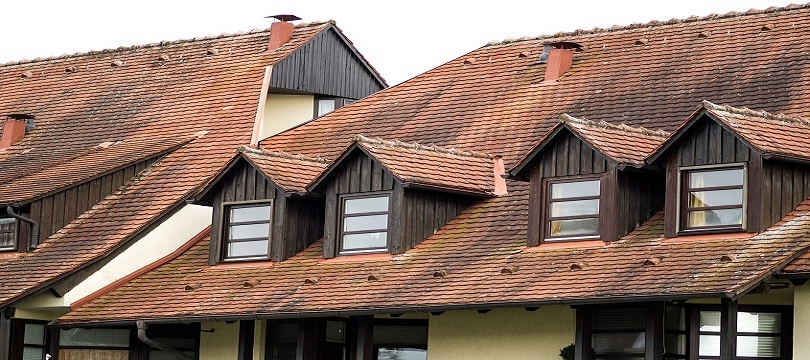

Every time, when you are up for a house maintenance or renovation, the check up and repair of your roof is overlooked. That's because it's expensive and many a times because a roof damage can't be easily found. Having it overlooked, you enjoy its service without any worry until it starts leaking or starts giving indications of some kind of a damage. Well, the good thing is that you can determine easily whether your roof needs a repair or not, if you keep a check on different signs of a roof damage.

Here are the signs that will let you know whether you need a roof renovation or replacement:
Missing Shingles Any missing shingle from its row or an entire missing row of shingles on your roof is a sure sign that you start thinking about the repairing of your roof. Home owners usually avoid these signs as they consider it a simple wear off that don't need a serious action like renovation. But, when it is further damaged due to storm or continuous rain, to a level that demands a complete replacement, they come to realize that they should have it renovated beforehand.
Stain Inside Your House If stains are visible on your ceiling it's a sign of roof leak which can be caused by several factors. Therefore, it should be inspected immediately and necessary actions should be taken because left untreated, it could lead to roof replacement.
Current Age of Your Roof The age of your roof tells much about the need of its repairing or replacement. Roof experts suggest that a typical roof, having a life span of 20 to 25 years, should be renovated or replaced, whichever necessary. If your roof has already been renovated for 2 or 3 times with just shingles laid over the previous ones and still leaks during rain, then it is in need of replacement.
Moss or Algae On Shingles Growth of moss and algae is usually seen on the roof surface, especially in winters. This results in trapping the moisture beneath the surface that eventually damages the granules of the shingles. Furthermore, an excessive growth of moss or algae will make it hard to brush it off. In that case, you'll be left with the only option of replacement.
Shingle Granules In Gutters Most of the roof tend to loose granules towards their end of life cycle, so keep a check on your gutters for loose granules. Inconsistent or darker color spots on some parts of the roof is another sign that shingles granules of your roof is worn and torn out, hence needs to be removed.
Light Shining Through Roof If you can see the light sneaking through your roof board then it's a definite sign of roof defect. In that case, contact a professional roofer to inspect your roof and suggest the best that's required for it. If not taken seriously, it'll lead to seepage resulting in water damage to your property.
Curled, Twisted or Cracked Shingles If you can see curl, buckle, or crack on your roof shingles, it's a definite sign of a wear down. Inspecting your roof shingles under direct sunlight will provide you with a clear picture of these kinds of damages. There are chances of getting reimbursement if it is under warranty. Contact a professional roof repairing contractor to check your eligibility status, and for replacement of your defective roof.
Keep a check on these signs of defect. And if any of these are found visible with your roof, don't just wait, but contact a professional roofing contractor to replace your roof before it's too late.